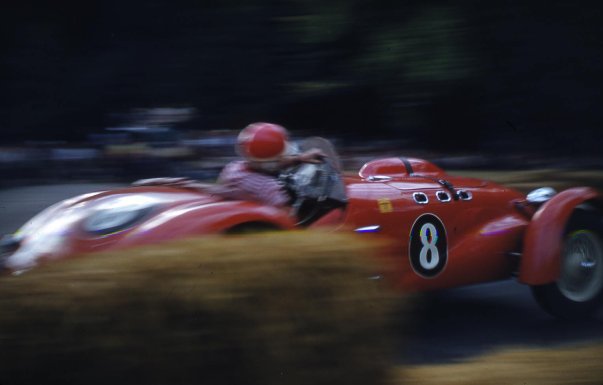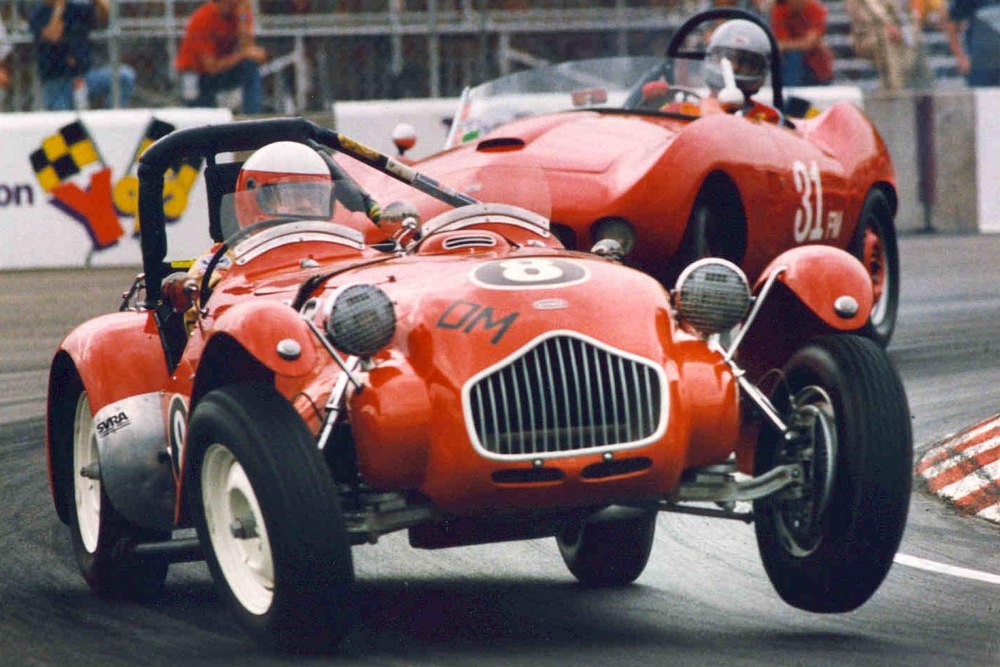Behind the “8-Ball”
/Fred Wacker, Jr. served in the Navy during WWII. After his discharge he returned to Chicago to commence his career in the family business – Ammco Tools, a supplier of tooling equipment for auto manufacturers. One of the fringe benefits included a company car - in this case a gray Pontiac 4-door sedan, which he despised. He soon decided to risk his father’s wrath by trading it for an MG TC.
One of his first trips in the TC was to attend the Indy 500, where he met up with some guys from the east coast, and was introduced to the fledgling Sports Car Club of America. This led to Fred’s role in establishing the Chicago chapter of the SCCA, and his entering the stripped down and mildly modified TC at Watkins Glen in the fall of ’49. The MG sported “8” as the racing number – the same number of his father’s racing yacht.
Fred’s maiden voyage in the field of sports car racing got him a 3rd in class finish, and gave him a chance to make a lot of contacts. He was racing a Healey Silverstone at Bridgehampton in 1950 when Tommy Cole introduced him to the Allards. Fred decided to go that route, ordered #1577 and commenced work with Frank Burrell to install Cad power in front of a highly modified Hydramatic. Fred likewise gave this car the number “8” which, with the artistic touch of Karl Brocken, morphed into the iconic “8-Ball” roundel.
Fred drove his Allard to a 3rd place finish at Watkins Glen in 1950, and then on to Florida for the inaugural Sebring 6 hour race. He and Frank Burrell finished two laps ahead of the field, but officially finished in 8th spot behind the ‘index of performance’ winner – a .724 liter, 27 horsepower Crosley Hotshot.
Fred, along with several other SCCA racers, then accepted the invitation from Argentine strongman Juan Peron for an all-expense-paid trip to Buenos Aires to run their cars in the Sports Car Olympics in March 1951. Fred finished 2nd, just behind John Fitch, before accepting an offer to sell his Allard. However international political issues arose with the sale of #1577, so it was shipped back to the US. Emil Loeffler had the car restored about ten years ago – and displayed it at the Allard gathering in New Jersey in 2009, and at Watkins Glen in 2010.
Fred Wacker awaits the start of a race in J2-2086...widely recognized as 'The 8 Ball'
Fred Wacker had already bought his second Allard J2 #2086 in 1951 before the Argentine sale complications arose, but did not have any problem re-selling 1577 once it got back to the US. He likewise fitted his new Allard with Cad power and a Burrell-modified Hydramatic – along with several other performance and handling enhancements. #2086 is the Allard J2 involved in the tragic Watkins Glen accident in September 1952 that essentially brought an end to racing on public roads in the US.
Wacker at speed in the 8 Ball
Fred continued to race #2086 through 1954. The car since passed through several hands before Paul Brownell of Milwaukee WI purchased it in 1986. Paul stored it in the garage behind his home for several years before deciding to go the ‘preservation’ route. About 6 years ago he gave it a rather comprehensive mechanical restoration, and had taken it to a number of local car shows – including Elkhart Lake. Paul Brownell has since passed away, and this car remains in the Brownell family.
To complicate matters – there are at least two other “8-Ball” Allards:
Late Allard Register publisher, and renowned Allard ambassador Dr. Tom Turner, raced his immaculate Ford flathead-powered Allard J2 #1575 under the “8-Ball” moniker (with Paul Brownell’s permission) for several years until his passing in 1994. Tom’s widow, Yvonne, subsequently went to racing school and continued to vintage race this J2 for the next couple years before selling it the Rick Cole Auction in Monterey. The car now resides in Europe.
Bob Lucurell owned and raced #3161, his red Hemi-powered J2X for the past several years. That car also displays the “8-Ball” moniker (with Fred Wacker’s blessings). Lucurell sold this car at Bonham’s Auction within the past year.






